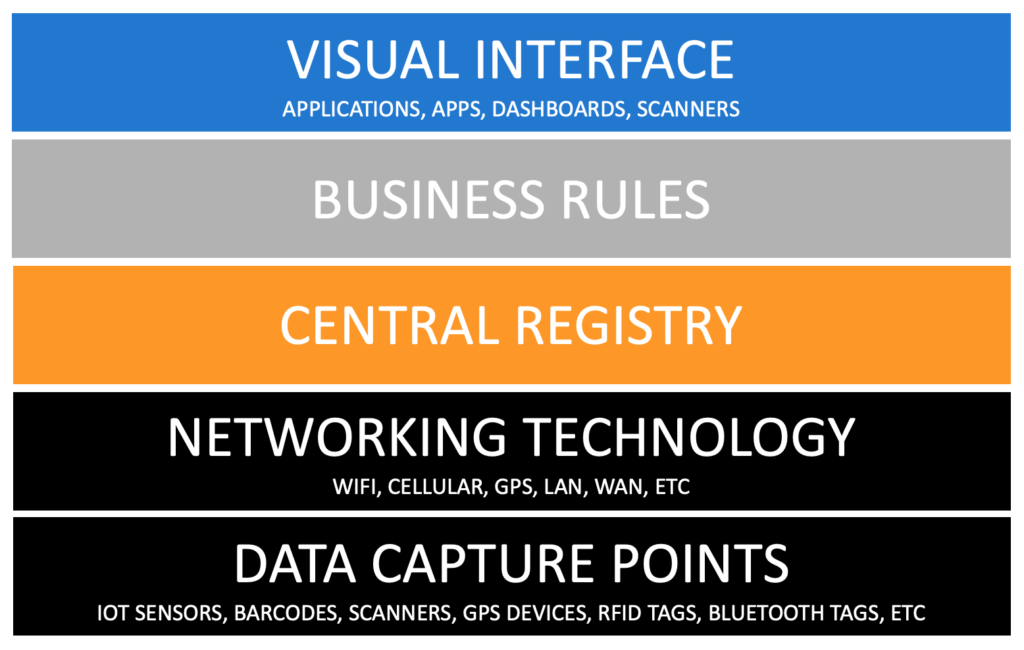What is Enterprise Resource Tracking
Every organisation relies on resources for their day-to-day activities. Whether this is fixed or mobile assets, equipment, infrastructure, raw and produced materials, or people; these resources form a vast network of instruments that enable the world around us to operate economically.
Enterprise Resource Tracking (ERT) is the integrated tracking of main business resources to manage these resources effectively to optimise their utilisation and drive efficiency in product, project or service delivery. This often happens in near real-time and supported by software and tracking technologies such as barcode, RFID, Bluetooth, IoT and/or GPS.
ERT is usually referred to as a category of enterprise management software — typically a suite of integrated tracking applications — that an organization can use to collect, store, manage and interpret data from a diverse range of business activities to track and manage materials, assets and people.

Why ERT
As resources become capital intensive assets essential to driving outcomes, the more crucial it becomes to manage them adequately and have systems in place to do so effectively.
Maintaining high resource utilisation rates and managing this across projects is a major business challenge in most large organisations. This includes making sure that projects get allocated the right amount of properly functioning assets and materials, assigning trained personnel to manage the tasks at hand, and predicting and monitoring time to completion of tasks and projects, often across locations affecting multiple stakeholders. In today’s world where safety and doctrine dictate procedures, enterprise resource tracking allows you to have continuous insight into the status, location, custodian and utilisation of any resource in the supply chain that is required for optimal business operation. ERT systems provide stakeholders with access to this information so they can make data-driven decisions whilst relying on technology to capture information. ERT systems generally capture a historical audit trail of changes and updates to the resources, which allows for extensive dashboarding and reporting and that incites responsibility when physical assets change hands.
Technology
At the core of Enterprise Resource Tracking systems rests a centralised asset registry. This database is accessible through a cloud-based setup where different user roles and authorisation levels grant various degrees access. Apps are often a fundamental part of the system, granting users mobile access and enabling them to record information at any location. This facilitates digitisation of documentation, checklists and extends far beyond the capabilities of spreadsheets and paper forms for capturing, updating, finding and displaying data.
On top of the data-layer rests a series of business rules that dictate processes and data integrity. Extensive dashboarding and automated notifications further drive automation and provide management with the capabilities to interpret information in meaningful ways.

IoT sensors and tracking technology endpoints (barcodes, RFID tags, Bluetooth tags, GPS devices, etc.) are used to capture and update information reliably and quickly. This data is relayed through a network of communication protocols and stored in the central registry. Automated gates and geo-fencing are often used to monitor the behaviour of movements and track assets accordingly. Further sensor integration can also capture information on usage, efficiency, hazards, and report on deviations from the normal.
Industries
ERT systems are used by organisations where assets and people perform complex operations or projects and where they move frequently from one location to another. Typical industries where this applies are:
- Construction
- Oil & Gas
- Mining
- Energy
- Healthcare
- Telecom
- Government
- Military
- Manufacturing
- Engineering
- Pharmaceutical
- Forestry
- Marine
- Production
- Agriculture
- Utilities
- Infrastructure
- Transport & Logistics
- Emergency services